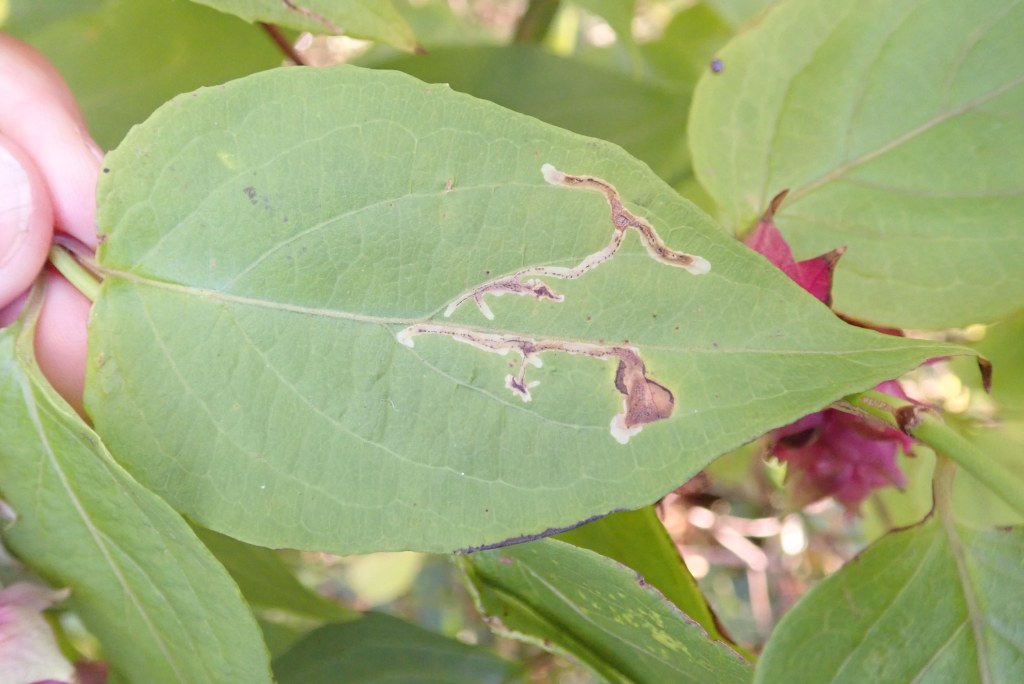In my last post I had meant to include this smut on Bluebells. It is common enough in this part of the world, but under-recorded.

In Broadford I found Venturia populina on Populus trichocarpa (Western Balsam-poplar). Bruce says it is “fairly common up here” but there is only one Scottish record on NBN – and that is incorrect as the host is given as Aspen.

In Ardvasar there were Red Campion capsules with small holes near the base. I have forgoten what does this and hope someone will remind me…. maybe the moth known as The Campion?

On one of the capsules I spotted this:

It is very small but looks a bit too organised to be just miscellaneous junk.
Nearby there was a Leycesteria formosa (Himalayan Honeysuckle or Pheasant Berry) with lots of leaf mines.
Mines on Leycesteria formosa are caused by flies that traditionally mine Lonicera periclymenum (Honeysuckle) and I sometimes find them difficult to tell apart despite excelllent guides at UKflymines and Plant Parasites of Europe. Anyway, these images found their way to Barry Warrington who runs the National Agromyzidae Recording Scheme and he says they are caused by Chromatomyia lonicerae.




Leave a comment